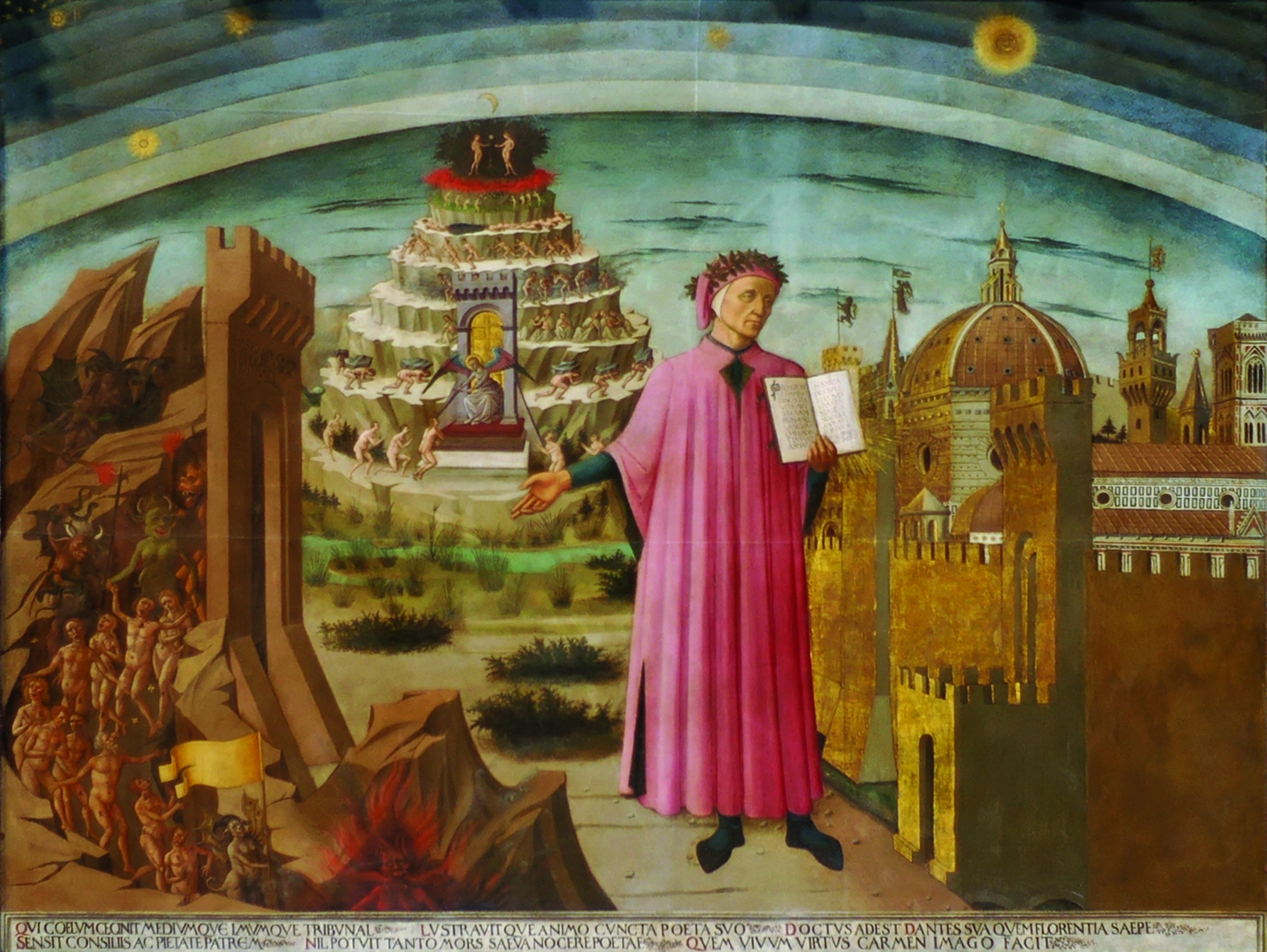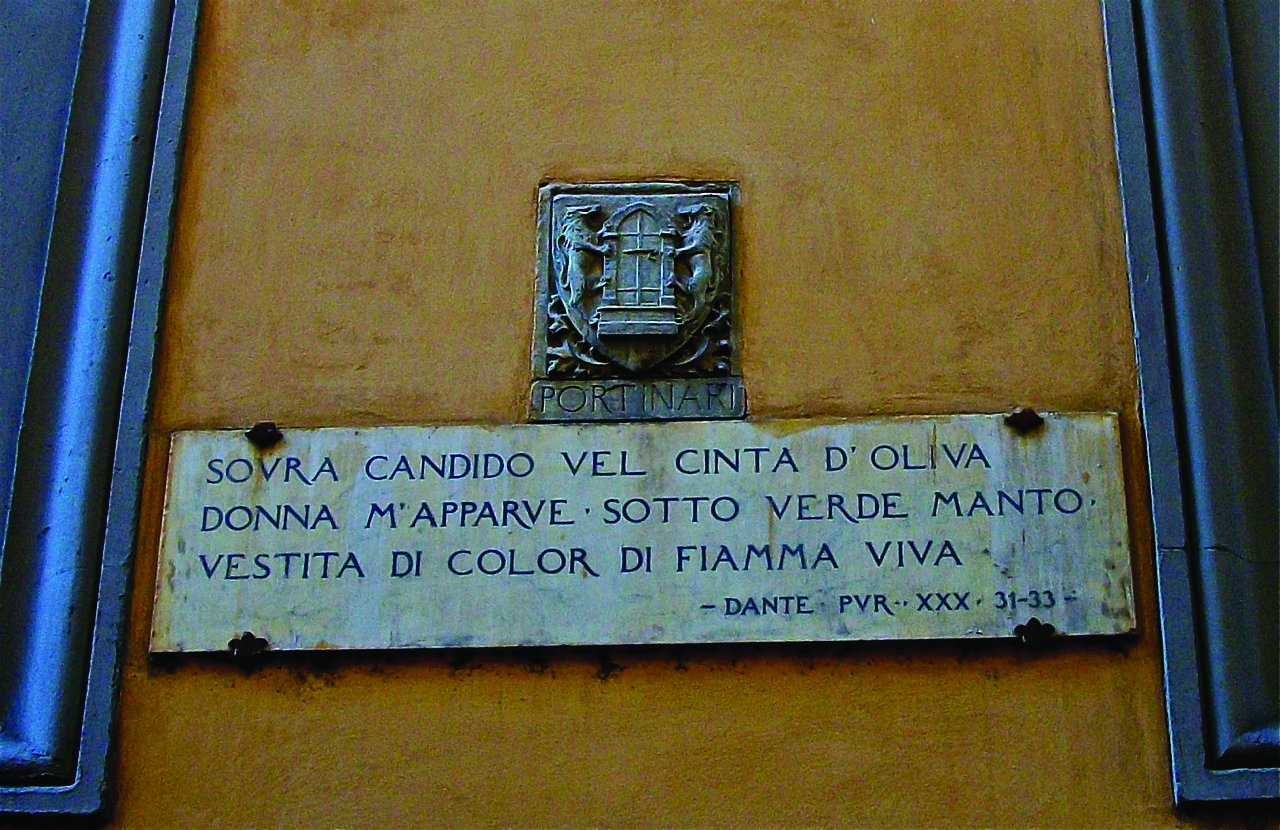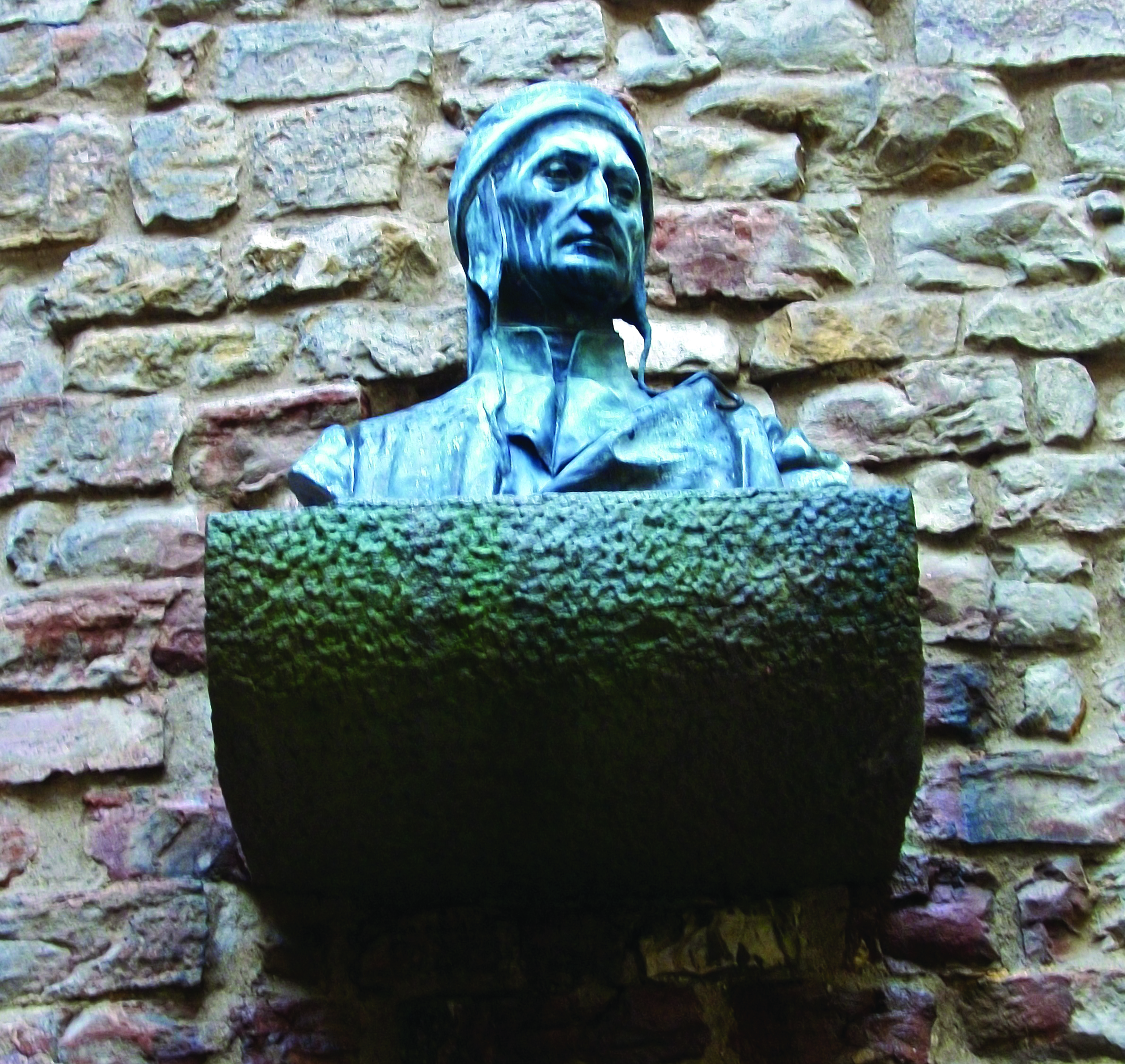A painting often really does speak a thousand words, and in this one we get to dive into to the mystical world of Dante
Inside the cathedral in Florence, just before the presbytery, on the left aisle wall, there is painting of Dante (1265-1321). It is a wonderful visual biography of this much-loved national icon. It was placed where it still is today in 1465, on the bicentenary of the great poet’s birth.

The Florentine painter Domenico di Michelino was commissioned for the work by the committee of the cathedral, the elected body of both laymen and men of the cloth responsible for the maintenance and decisions concerning the cathedral square. Interestingly, it replaced an earlier painting of the poet which had been in the same spot. Dante was famous and, by the 1400s, he had been famous for quite some time.
Dante Alighieri was born in 1265. He was exiled from his beloved republic of Florence, however, for political reasons in 1302 and died in exile in Ravenna in 1321. His magnum opus was La Divina Commedia (The Divine Comedy), an epic poem written over many years and divided into three major sections: inferno, purgatory and paradise. Dante himself is the narrator in the poem as he travels through inferno and purgatory with the aid of a guide, Virgil, the famed ancient Roman poet. Beatrice, Dante’s muse, guides him in the third and final stage in paradise.

It is a tale of the people he meets, their stories and what their future holds for them as a consequence of their actions. It reflects the good, the bad and the ugly of human nature. It is a commentary on contemporary politics and society – and Dante isn’t shy in dishing out his judgement on people, irrespective of their social status.
It is also a journey of self-discovery and soul searching for the meaning and substance of life and our responsibilities. Dante embarks on a spiritual journey explicit in the very name of the work, Divine. Contrary to what we English speakers may assume with the other part of the title, Dante’s comedy is not a work that is supposed to be comic and necessarily make us laugh; instead, a comedy in the ancient world of the Greeks was the title of a piece that didn’t end in tragedy for the protagonist but in their triumph, and Dante does indeed triumph, ending up in heaven.
In the painting, Dante is shown wearing his usual crimson red robe with a laurel wreath on his head, the traditional symbolism for poets dating to antiquity. He is depicted holding his Divine Comedy with the first six lines written on the pages. He is shown outside the city walls of Florence, visually depicting his exile. These were the second set of walls around the city, started in the 1170s. They show the gates within the walls, which would close after sunset and reopen the following morning, locking up the city. Florence is shown as it was in the 1460s when the painting was executed, and not when Dante was alive. He never saw the dome of Brunelleschi, nor the town hall finished with the bell tower.

Dante motions with his free hand to where his spiritual journey takes him in the Divine Comedy. The gates of hell with the eternal flames are in the bottom left-hand corner, and written above the entrance is the famous line ‘Abandon all hope, ye who enter here’. The nine circles of hell are waiting below for the procession of sinners.
Then there is purgatory, a long, winding road around the mountain behind him in the centre of the painting; and, finally, meeting the archangel Gabriel in his armour, waving his sword in the air and weighing the souls at the gates of heaven. The garden of Eden flourishes with evergreen nature at the top.
Lastly, above Eden is the medieval make-up of the universe, pre-Galileo. We can just see the perfect concentric spheres, each one inhabited by a planet, and they are depicted here, recognisable by their symbolism.
A painting often really does speak a thousand words and in this one we get to dive into to the mystical world of Dante. One can continue this exploration into Dante’s world by hunting out the marble plaques all over Florence. At the beginning of the 1900s, the city engraved white Carrara marble slabs with quotes from the Divine Comedy that were about places in the city, and placed them on the site. If the walls could speak…
